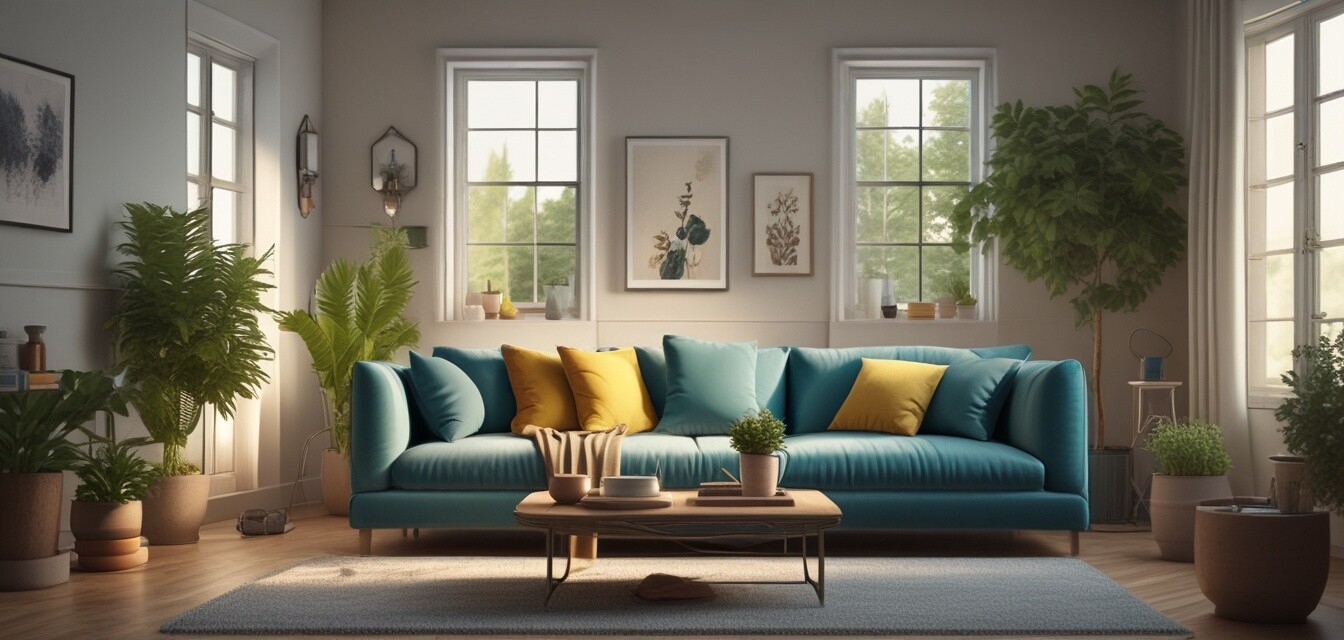
The Effect of Color Psychology on Well-Being
Key Takeaways
- Colors can significantly impact mood and emotions.
- Creating a color-balanced environment can enhance well-being.
- Different colors evoke different feelings, influencing behavior and productivity.
- Incorporating color thoughtfully in your space can aid relaxation and focus.
Color psychology is a fascinating field that explores how colors influence our emotions, behaviors, and overall well-being. Understanding the effects of different colors can help you create a space that enhances your mood and productivity. Whether you are redecorating your home or designing a workspace, being mindful of your color choices can lead to a more balanced and harmonious environment. In this article, we'll delve into the impact of various colors on well-being and offer practical tips for creating a color-balanced atmosphere.
Understanding color psychology
Color psychology examines how colors affect human emotions and perceptions. Each color can evoke specific feelings and associations, which can impact how we interact with our surroundings and each other.
The basics of color psychology
| Color | Emotional Impact | Common Associations |
|---|---|---|
| Red | Stimulating, energizing | Love, passion, urgency |
| Blue | Calming, tranquil | Trust, serenity, peace |
| Yellow | Cheerful, uplifting | Happiness, optimism |
| Green | Refreshing, restorative | Nature, growth, health |
| Purple | Creative, inspirational | Luxury, wisdom, spirituality |
| Orange | Dynamic, energetic | Encouragement, enthusiasm |
| Black | Powerful, sophisticated | Elegance, formality |
| White | Clean, simple | Purity, simplicity |
Creating a color-balanced environment
To optimize your space for well-being, consider the following tips for creating a color-balanced environment:
Tips for using color psychology
- Choose a color palette: Select colors that resonate with the feelings you want to evoke. A balanced palette can bring harmony to the space.
- Consider the purpose: Use calming colors like blues and greens in bedrooms or relaxation areas, while energizing colors like yellows and oranges can be great for creative spaces.
- Incorporate natural elements: Bring in plants or natural materials to enhance the overall aesthetic and reinforce the positive feelings associated with colors.
- Experiment with lighting: Different shades of the same color can appear differently under various lighting conditions. Experiment to find what feels best in your space.
- Use accent colors: Don't be afraid to introduce pops of color through art, decor, or furniture to create focal points and energize the space.
Color choices for specific areas
The color choices you make can vary depending on the area being designed. Here's a breakdown of color suggestions for different rooms:
| Room/Area | Suggested Colors | Emotional Impact |
|---|---|---|
| Living Room | Warm neutrals, blues | Welcoming, relaxing |
| Bedroom | Soft blues, greens, lavenders | Calm, serene |
| Home Office | Yellows, oranges, greens | Inspirational, active |
| Kitchen | Whites, soft yellows | Bright, cheerful |
| Bathroom | Light blues, whites | Clean, refreshing |
Final thoughts on color psychology
By harnessing the principles of color psychology, you can enhance your well-being through thoughtful design choices. Each color has its emotional significance, and creating a balanced environment influences not only aesthetics but also mood and productivity. As you consider how to incorporate color into your living or working space, keep in mind the feelings you wish to cultivate.
Pros
- Colors can boost mood and energy levels.
- Thoughtful design can lead to a more satisfying living experience.
- Fosters a positive atmosphere for productivity and relaxation.
Cons
- Not every color will work for every individual.
- Can be subjective, varying personal preferences and perceptions.
To explore more about using color and other wellness tools effectively, check out our articles on wellness tips or learn about aromatherapy products that can enhance your space.
Overall, the mindful application of color psychology offers a unique approach to enhance well-being and cultivate a more harmonious environment. You can also discover more product recommendations in our massage oils and tools category for holistic wellness. Explore the many colors of wellness, and enjoy the benefits they bring!
